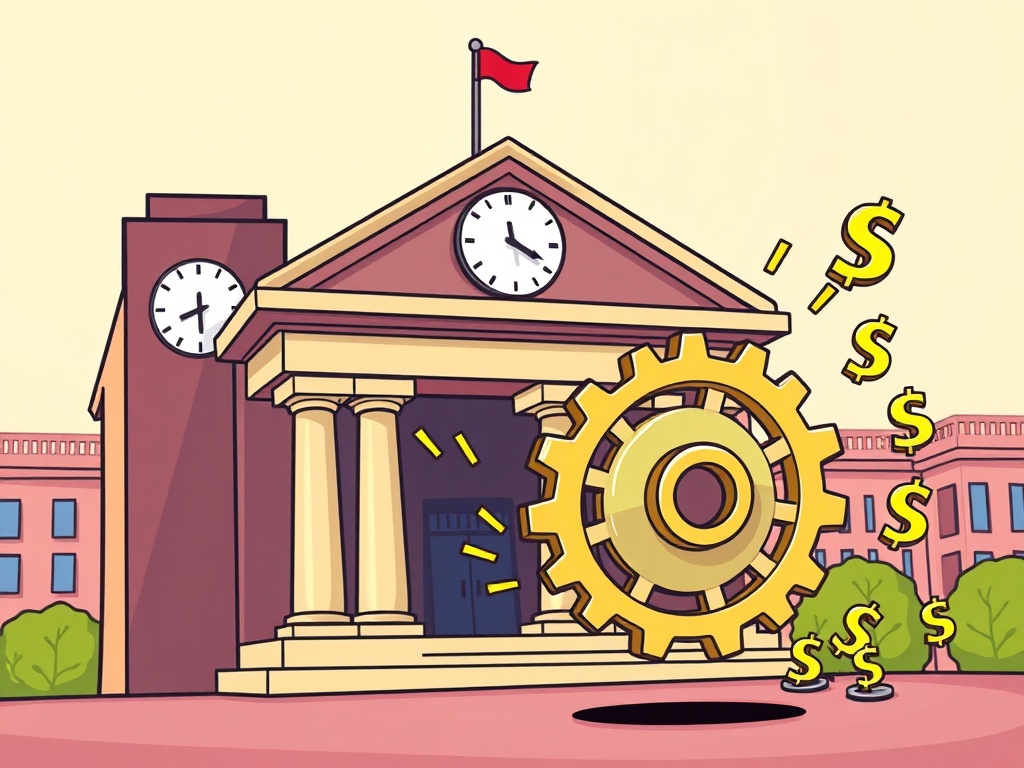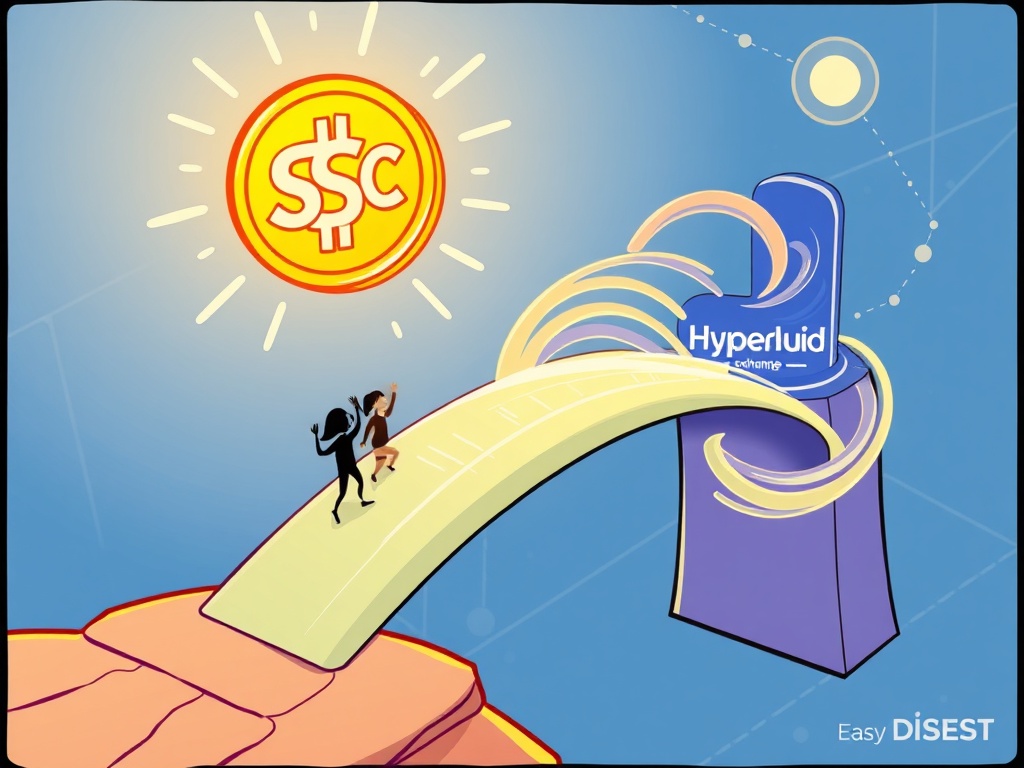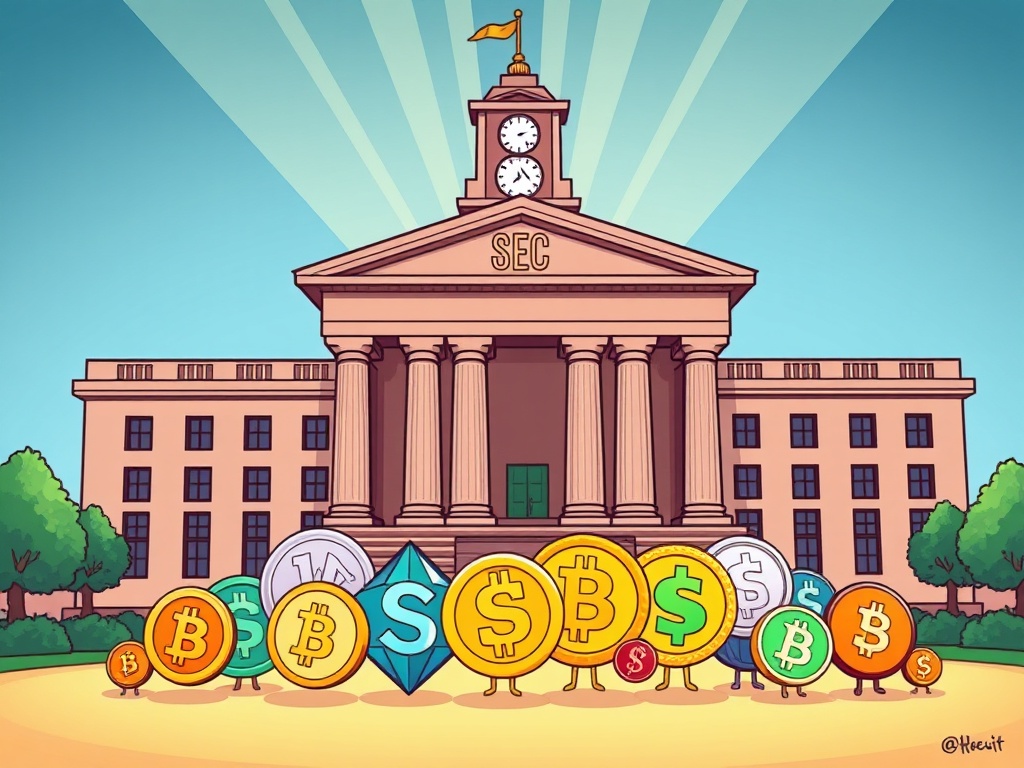BitcoinWorld

Federal Reserve Impact: Decoding the Crucial Shift After Kugler’s Resignation
The world of finance is constantly abuzz with news, but some developments carry a weight that resonates across every market, from traditional stocks to the volatile cryptocurrency space. One such piece of news recently broke, signaling a potentially significant shift in the United States’ economic landscape: Federal Reserve Governor Adriana Kugler is stepping down on August 8, months ahead of her term’s official end in January. This early departure creates a crucial opening for a new appointment, potentially reshaping the very core of US monetary policy and, by extension, the future of the crypto market. The immediate question on everyone’s mind is: what will be the true Federal Reserve Impact?
Kugler, an appointee of former U.S. President Biden, has been a key voice within the Fed’s Board of Governors. Her resignation, first reported by Watcher Guru on X, isn’t just a routine personnel change; it’s a strategic moment that could alter the delicate balance of opinions within the Federal Open Market Committee (FOMC). This committee is the powerhouse behind interest rate decisions and other critical monetary policies that directly influence economic growth, inflation, and investor sentiment. For those tracking digital assets, understanding this evolving situation is paramount, as the Fed’s actions often ripple through the crypto ecosystem in profound ways.
What Does Federal Reserve Impact Mean for Policy Direction?
To truly grasp the potential Federal Reserve Impact, it is essential to understand the institution’s role. The Federal Reserve, often simply called ‘the Fed,’ serves as the central bank of the United States. Its primary mandates are to promote maximum employment, maintain stable prices (control inflation), and ensure moderate long-term interest rates. These goals are achieved through various tools, most notably by adjusting the federal funds rate, which influences borrowing costs across the economy, and managing its balance sheet through quantitative easing or tightening.
Adriana Kugler joined the Board of Governors in September 2022, bringing with her a background in economics and labor market research. As one of the seven governors, she held a permanent voting seat on the FOMC, making her voice influential in policy debates. Her departure opens a vacancy that, under normal circumstances, would be filled by the sitting president. However, with her early resignation occurring months before her term concludes and potentially coinciding with a presidential transition, the opportunity arises for President Trump to nominate her replacement should he win the upcoming election. This introduces a significant political dimension to what is typically an economic decision, potentially leading to a nominee with a different philosophical approach to monetary policy.
A new appointment could shift the overall leanings of the FOMC. The committee is a mix of economists, bankers, and academics, each bringing their own perspectives on economic conditions and the appropriate policy response. The addition of a new Governor, especially one chosen by a different administration, could alter the consensus on critical issues like the pace of interest rate changes, the size of the Fed’s balance sheet, and even the approach to inflation targeting. This is why market participants are closely watching for any indication of who might be nominated, as their stance could signal a new era for monetary policy.
Understanding the Fed’s Internal Balance and Future Direction
The Federal Open Market Committee (FOMC) is comprised of 12 voting members: the seven members of the Board of Governors, the president of the Federal Reserve Bank of New York, and presidents of four other Federal Reserve Banks on a rotating basis. This structure ensures a diversity of regional economic perspectives, but the Board of Governors holds a consistent and significant sway.
Within the FOMC, members are often characterized as either ‘dovish’ or ‘hawkish.’ A dovish stance typically favors lower interest rates and looser monetary policy to stimulate economic growth and employment, even if it means tolerating slightly higher inflation. A hawkish stance, conversely, prioritizes controlling inflation, even if it means higher interest rates and potentially slower economic growth. Governor Kugler has generally been perceived as leaning dovish, aligning with a cautious approach to rate hikes and an emphasis on labor market conditions.
Her replacement could tip the scales. If a new appointee is more hawkish, the committee might lean towards a more aggressive stance on inflation, potentially leading to higher or more prolonged periods of elevated interest rates. Conversely, a similarly dovish replacement would maintain the existing balance. The political affiliation of the nominating president often influences this leaning, with Republican appointees sometimes perceived as more hawkish and Democratic appointees more dovish, though this is not always a strict rule. The balance of power within the FOMC directly dictates the future trajectory of interest rates, which are the bedrock of the global financial system.
Here is a simplified look at the FOMC’s voting structure and how a change can ripple through decisions:
| FOMC Member Type | Number of Members | Influence on Policy |
|---|---|---|
| Board of Governors | 7 (including Chair) | Permanent voting members, set overall direction and strategy. |
| New York Fed President | 1 | Permanent voting member, executes open market operations. |
| Other Fed Bank Presidents | 4 (rotating) | Contribute regional economic insights, influence debate and provide diverse viewpoints. |
How Could This Federal Reserve Impact Cryptocurrency Markets?
The connection between the Federal Reserve’s actions and the cryptocurrency market might not always be immediately obvious, but it is undeniably strong. The overarching Federal Reserve Impact on the broader financial landscape inevitably spills over into digital assets. Here’s how:
-
Interest Rates and Risk Appetite: Higher interest rates generally make traditional, less volatile investments like government bonds more attractive. When investors can earn a good return with minimal risk, their appetite for riskier assets, such as cryptocurrencies, tends to diminish. Conversely, lower interest rates push investors towards higher-yielding, riskier assets in search of returns, often benefiting crypto. A shift in the Fed’s stance on rates, influenced by a new Governor, could therefore directly affect the flow of capital into crypto.
-
Liquidity: The Fed’s balance sheet operations, like quantitative easing (QE) or quantitative tightening (QT), significantly impact market liquidity. QE injects money into the financial system, creating a more abundant supply of capital that can flow into various assets, including crypto. QT, on the other hand, withdraws liquidity, potentially leading to tighter financial conditions and downward pressure on asset prices. Any change in the Fed’s approach to its balance sheet, influenced by new committee members, would have a direct liquidity Federal Reserve Impact on crypto markets.
-
Economic Stability and Sentiment: The Fed’s primary goal is to maintain economic stability. When the economy is perceived as stable and growing, investor confidence tends to be high, fostering a ‘risk-on’ environment where speculative assets like crypto can thrive. Conversely, periods of economic uncertainty or recession, often influenced by Fed policy decisions, can lead to a ‘risk-off’ sentiment, prompting investors to pull out of volatile assets. The perceived hawkishness or dovishness of the Fed, especially with new appointments, can significantly shape this sentiment.
-
Historical Correlation: We have seen clear correlations in the past. During periods of aggressive Fed rate hikes, such as in 2022, Bitcoin and the broader crypto market experienced significant downturns. Conversely, periods of lower rates and ample liquidity have often coincided with bull runs in crypto. While correlation does not always imply causation, the macro-economic environment set by the Fed is a dominant factor influencing the flow of capital globally, and crypto is no exception.
Therefore, tracking who might replace Governor Kugler and their likely policy leanings is not just an academic exercise for crypto investors; it’s a practical necessity for understanding potential future market conditions.
Navigating the Uncertainty: Actionable Insights for Investors
Given the potential for a significant Federal Reserve Impact, how should cryptocurrency investors prepare and react? Navigating periods of policy uncertainty requires a thoughtful and strategic approach rather than impulsive decisions. Here are some actionable insights:
-
Stay Informed and Monitor Appointments: Keep a close watch on news regarding the nomination process for Governor Kugler’s replacement. Research the economic views and past statements of any potential candidates. Understanding their likely stance on inflation, employment, and monetary policy tools will provide valuable clues about the Fed’s future direction.
-
Analyze Economic Indicators: The Fed’s decisions are data-dependent. Pay attention to key economic reports such as inflation rates (CPI, PCE), employment figures (non-farm payrolls, unemployment rate), and GDP growth. These indicators provide insight into what the Fed might prioritize and how it might react, regardless of who is on the committee.
-
Diversify Your Portfolio: While tempting to go all-in on one asset, diversification remains a cornerstone of sound investment strategy. This applies not only within your crypto portfolio (e.g., holding a mix of Bitcoin, Ethereum, and other altcoins) but also across different asset classes. A diversified portfolio can help cushion the blow if one particular market segment is negatively affected by policy changes.
-
Consider a Long-Term Perspective: Cryptocurrency markets are inherently volatile. Short-term reactions to macro news, including Fed announcements, can be significant. However, for many investors, a long-term perspective focused on the fundamental technology and adoption of digital assets can help weather short-term fluctuations. Avoid panic selling or buying based solely on immediate news cycles.
-
Risk Management is Key: Implement robust risk management strategies. This includes setting stop-loss orders, not investing more than you can afford to lose, and regularly reviewing your portfolio’s exposure to different risks. Understanding your personal risk tolerance is crucial, especially during periods of increased market uncertainty driven by policy shifts.
By proactively researching and applying these strategies, investors can better position themselves to navigate the potential shifts brought about by the evolving composition of the Federal Reserve and its ongoing Federal Reserve Impact on global markets.
A New Chapter for the Federal Reserve and Crypto Markets
The resignation of Federal Reserve Governor Adriana Kugler on August 8 marks a pivotal moment for the US central bank and, by extension, for the global financial markets, including the dynamic world of cryptocurrency. Her early departure creates an immediate vacancy, opening the door for a new presidential appointment that could significantly alter the internal balance of the Federal Open Market Committee. This shift holds the potential to influence the Fed’s future approach to monetary policy, particularly concerning interest rates and liquidity management.
For cryptocurrency investors, understanding this evolving situation is not merely an academic exercise but a critical component of informed decision-making. The Federal Reserve Impact on liquidity, risk appetite, and overall economic sentiment directly translates into potential movements in Bitcoin and altcoin prices. As the nomination process unfolds and a new Governor takes their seat, the market will be keenly watching for signs of a shift towards more hawkish or dovish policies. Staying informed, diversifying portfolios, and maintaining a long-term perspective will be essential strategies for navigating the uncertainties that lie ahead.
Frequently Asked Questions (FAQs)
Q1: Who is Adriana Kugler and why is her resignation significant for the Federal Reserve Impact?
Adriana Kugler is a Federal Reserve Governor appointed by President Biden. Her resignation is significant because it creates an early vacancy on the Board of Governors, allowing the sitting president to nominate a replacement sooner than expected. This new appointment could alter the balance of opinions within the Federal Open Market Committee (FOMC) and influence future monetary policy decisions, impacting the overall Federal Reserve Impact on the economy.
Q2: How does the Federal Reserve influence interest rates?
The Federal Reserve influences interest rates primarily through the federal funds rate, which is the target rate for overnight lending between banks. By raising or lowering this target, the Fed affects borrowing costs throughout the economy, from consumer loans to business investments. These rate changes are decided by the FOMC, and the leanings of its members (dovish vs. hawkish) directly shape these decisions.
Q3: What is the potential Federal Reserve Impact on Bitcoin’s price?
The Federal Reserve Impact on Bitcoin’s price is often indirect but profound. Higher interest rates can make traditional investments more attractive, reducing demand for riskier assets like Bitcoin. Conversely, lower rates and increased liquidity (e.g., through quantitative easing) can encourage investment in cryptocurrencies. Changes in Fed policy can also influence overall market sentiment (risk-on/risk-off), which affects crypto valuations.
Q4: What is the difference between “dovish” and “hawkish” Fed policies?
A “dovish” Fed policy typically favors lower interest rates and looser monetary conditions to stimulate economic growth and employment, even if it means tolerating slightly higher inflation. A “hawkish” policy, on the other hand, prioritizes controlling inflation, often through higher interest rates and tighter monetary conditions, even if it might slow economic growth.
Q5: When will a new Governor be appointed to the Federal Reserve?
The timeline for a new Governor’s appointment depends on the nominating president and the Senate confirmation process. Given Governor Kugler’s resignation date of August 8 and the upcoming U.S. presidential election, the appointment could occur relatively quickly if the current administration nominates a replacement, or it could be delayed until after the election results are clear and a new administration takes office in January.
If you found this analysis of the Federal Reserve’s evolving landscape and its implications for the crypto market insightful, please consider sharing it with your network. Your engagement helps us continue to provide timely and relevant financial news and insights to a broader audience.
To learn more about the latest crypto market trends, explore our article on key developments shaping Bitcoin and Ethereum institutional adoption.
This post Federal Reserve Impact: Decoding the Crucial Shift After Kugler’s Resignation first appeared on BitcoinWorld and is written by Editorial Team





